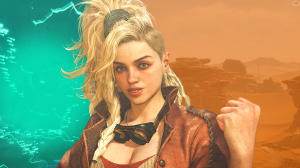Joker: Folie á Deux has hit theaters like that car bomb that blew up Arthur Fleck’s courtroom trial (SPOILERS… if you care). At the time of writing this, Joker 2 holds the kind of critical and viewer scores reserved for the worst comic book movies (see: The Spirit). If the first Joker (2019) movie divided audiences, Folie á Deux has managed to shave off a significant portion of the audience that liked the first film, leaving massive questions as to who the sequel is even meant for, as well as the intent behind its story.
Videos by ComicBook.com
Critics and audiences are very upset and displeased with Joker 2 – and as the popular meme says: that’s the joke.
Joker: Folie á Deux Is A Necessary Antidote For Joker Mania
There’s been a debate about the first Joker movie since its release. Director Todd Phillips and star Joaquin Phoenix maintained an air of ambiguity regarding how Joker related to DC’s Batman lore – if at all. Of course, the clown makeup and Joker-style suit made it seem like the film attempted to give The Joker a deeper origin story. By the time Joker hit theaters in wide release, Phillips already seemed agitated by both the endless barrage of Batman connection questions, as well as the “controversy” over Joker being a dog whistle for incels (i.e., frustrated or angry – and potentially violent – male loners).
However, all those talking points seemed to be missing a larger possible point of Joker – one that Joker: Folie á Deux doesn’t let viewers miss a second time: that there’s a massive gap between the story of “Arthur Fleck,” a troubled man in an uncaring society, and “Joker,” a beloved pop-culture icon of murder, mayhem, and madness.
“The sad thing is, he’s Arthur, and nobody cares about Arthur,” Joker 2 director Todd Phillips recently said in an interview. He later added that Arthur is “an unwitting icon. This thing was placed on him, and he doesn’t want to live as a fake anymore — he wants to be who he is.”

Joker (2019) was a joke on society and DC fans alike – a statement that a real human story about a man being crushed by modern society or fighting back against said society doesn’t get the notice it does until you put a coat of Joker paint on it (and subsequently, filmmakers can’t get projects made unless they bend to the pop-culture genre of the day – comic book movies). Joker 2 seems to suggest that Philips and Phoenix were more horrified than anyone that their slapdash Joker(ish) project earned over $1 billion at the box office and got Phoenix the Best Actor Oscar – new career heights for both of them. It all but proved the point they were arguably trying to mock, with the entire subtextual humor arguably flying over the heads of so many viewers. The sequel, then, seems to mock every expectation of what a billion-dollar-grossing, Oscar-winning “comic book movie sequel” should do. The slapdash Joker tropes are mixed with slapdash versions of just about every kind of iconic “Oscar-bait” film: be it tragic-love dramas (A Star Is Born), musicals (La La Land), prison dramas (The Shawshank Redemption), courtroom dramas (To Kill a Mockingbird), or character-driven stories of reality vs. fantasy/madness, Folie á Deux mocks it all down to the overly-flowery title.
The courtroom scenes of Joker: Folie á Deux are especially telling: Phillips literally puts the first film on trial, as characters like Gary Puddles (Leigh Gill) and Sophie Dumond (Zazie Beetz) return from the first film to give sobering (if not heartbreaking) testimony about the real damage and harm that Arthur’s rampage of violence has done – even to those he claimed to care for. Phillps also adds the touch of constant background shouts in the courtroom from the families of the three men Arthur murdered on the train, further cutting down many of the misguided “glory” moments of Joker’s killings and Arthur’s image as a counter-culture hero.

Lady Gaga’s Lee Quinzel and the entire “romance” with Arthur is also played with a biting cynicism. The fantastical imaginings Arthur has of “Joker and Harley” get cut down by the harsh reality that the man beneath the makeup is of no worth to Lee – a sharp below to anyone drawn to the image of The Joker as a suave, seductive, or virile man to be admired (let alone imitated). That awkward “love scene” in an Arkham solitary cell seems like an almost cruel joke about how ‘romantically challenged’ the would-be Arthur Flecks of the world truly are.
The entire Joker sequel seems to be a poison pill to anyone looking for “inspiration” or “entertainment” in watching The Joker as a cinematic protagonist – maybe a fatal blow to the idea of doing Joker movies at all. In this day and age, the idea of filmmakers putting something like moral concerns and social implications over the chase for bigger money, accolades, and fame is… well, crazy. But one day, that act may get described with other words that often only get awarded with time: like bold. Daring. Brave. Or, in this specific case, hilarious.
The snooty cinephiles, superhero movie nerds, and angry incel boys are all big mad together at Joker 2 right now – which may be the most Joker thing this franchise ever does.
Joker: Folie á Deux is now playing in theaters.









